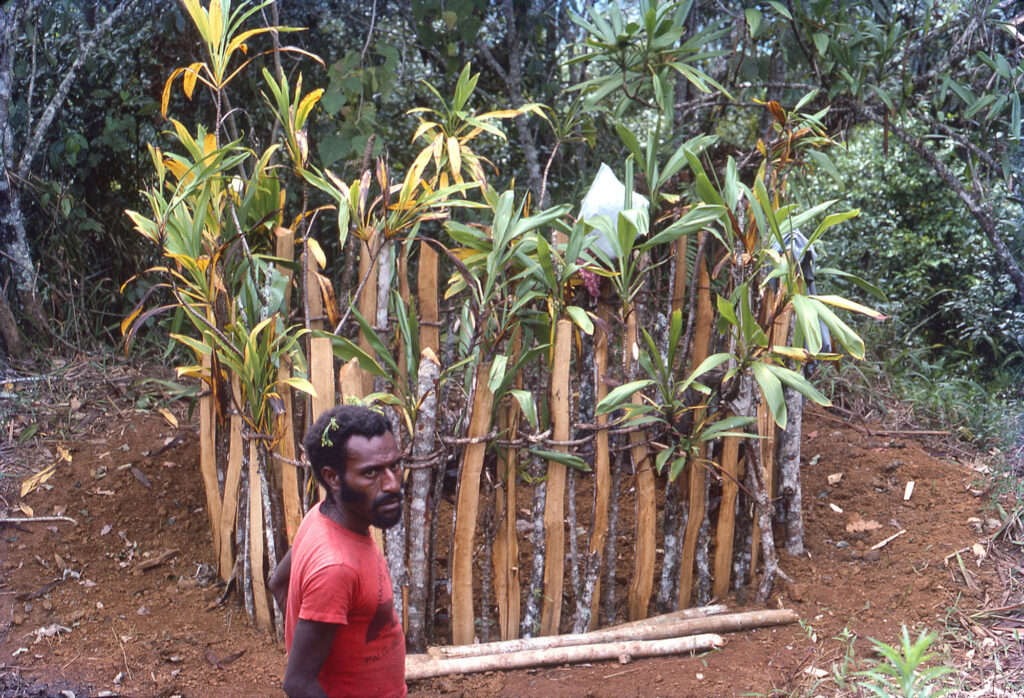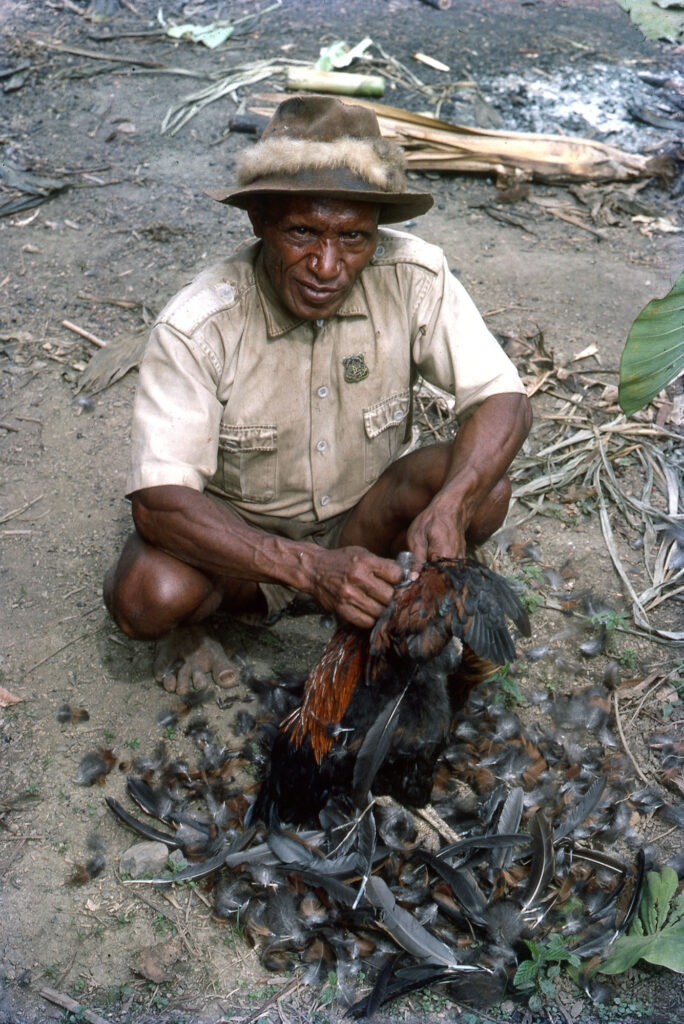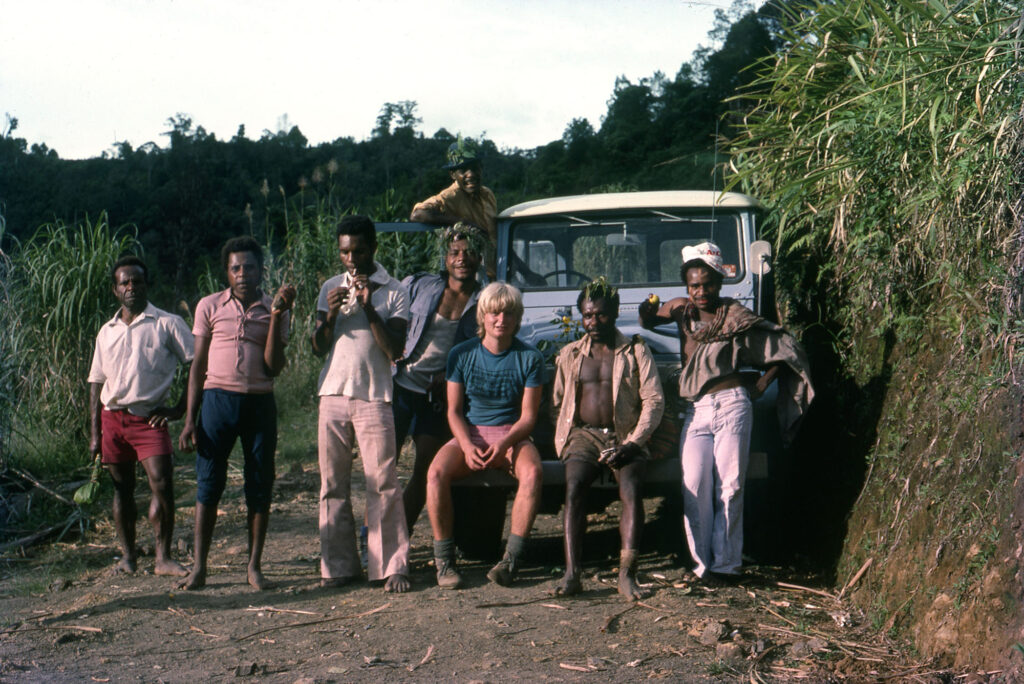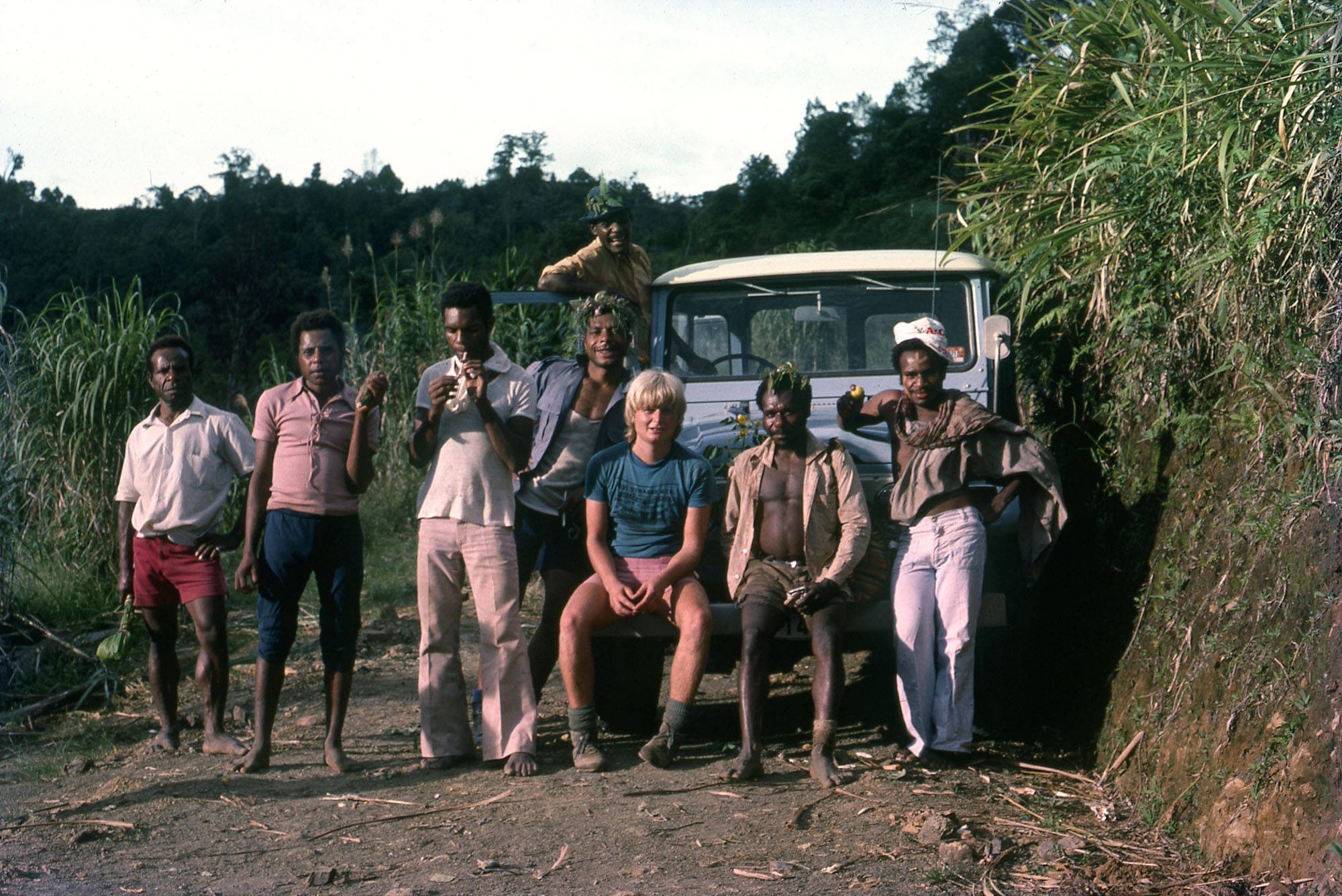David Theobald
Preamble
May 1974 finds me in possession of the degree of Bachelor of Medicine and Bachelor of Surgery from the University of London at St Mary’s Hospital Medical School. I was 22 years old. A fully qualified but not fully registered doctor. To be a ‘proper’ quack I had to do a year of pre-registration house jobs – one in surgery and one in medicine. The second was in Romford, East London and one cold, wet night in March 1975 I was called out of bed – again – to see some hopeless problem at 03.30 and I thought, Enough of this – I’m out of here. This medicine lark isn’t like what it appears on the telly at all. I looked in the back of the BMJ for the overseas jobs and applied to be a Casualty Officer at King Edward VIIth Memorial Hospital, Bermuda. So did loads of other chaps and I wasn’t selected. I then applied to be a medical officer in Papua New Guinea – having first looked at an atlas to see where it was and satisfying myself it was sufficiently far from Romford. I was accepted with (suspiciously) open arms and before I really knew what I had done, I was at Heathrow with a one way ticket to Port Moresby.
Goroka
When I left London I was told I would be going to Popondetta which, on an atlas where PNG occupied about 10% of one page, appeared to be on the coast. Wrong and wrong. I was going to Goroka and Popondetta is inland and is at one end of the Kokoda Trail of WW2 fame. I have never been to Popondetta.
Goroka boasted a base hospital with proper specialists, some registrars on rotation from Sydney hospitals and a few of us medical officers. What it didn’t have were any specialist pathologists. Blood tests of reasonable (for the day) sophistication were doable, microbiology of sorts could be done but histopathology had to be sent to Moresby. This brings us to post-mortems. Who was to do these? The Medical Superintendent decided that we dogsbody Medical Officers would do them and whoever was on A&E for the day drew the short straw. There weren’t many PMs to be done, so it was no big deal; I had never been asked to do one, so why worry?
One Sunday afternoon the Medical Superintendent called at my house, confirmed I was the A&E wallah for the following morning and told me there is a post-mortem to be done. “Fine,” I said, knowing that I didn’t think it was fine at all, “but why are you telling me now?” “Because it is not in the hospital and the Police will pick you up at 0700 tomorrow.” Several problems here. The main one – or so I thought at the time – was that I had no real idea how to do a post-mortem. I think I might have seen one or two, I had been to the series of forensic pathology lectures because they were good fun in a kind of Jack the Ripper way, but actually doing one? Not a clue.
07.00 next morning, as promised, there was a knock on the door and there was a handful of policemen, the hospital mortuary attendant with his tools in a pillow case (no, I have no idea either) and a Landcruiser. The in-charge policeman looked at my jandal shod feet and said, “Do you have any walking boots? We are going a fair way away from the road.” Oh.
Suitably booted and into the Landcruiser that took us on a couple of hours drive to Lufa where the Patrol Officer (kiap), an Australian in his mid-twenties, was effectively law and order for hundreds of square miles. He upped the ante by asking if I had a blanket “as there is no way you are going to be there and back today”. I received the blanket in the spirit it was given and got back into the Toyota. Another hour maybe and we slowed in a village and two blokes jumped onto the outside of the vehicle. “Those are our guides/carriers,” the constabulary told me in a reassuring tone. I was far from reassured.
In a short while the vehicle stopped and the two (barefooted) outside passengers darted off into the bush. We followed. We followed for hours, up hill, down dale, across streams, through villages until, with dusk falling, we arrived at yet another village.
At last, we are here. Nope, this was just the overnight stop. Leave boots on and employ blanket and at dawn we are off again. Note, dear reader, the lack of mention of food thus far – there wasn’t any. Water, yes but food, no. On we go for an hour or so and then the guide points to yet another ridge and declares that as being our destination. On the ridge was a village that consisted of half a dozen huts and not much else. Well, there was something else. Just down the ridge was a crudely constructed picket fence with a bilum (the string bag that all PNG women carry) hanging off one of the stakes. Behind the fence was the object of our trek – a dead villager.

The police filled me in on the back story. Apparently, this woman had a fight with her husband and then died. We were here to do official stuff. I was to do a post-mortem and depending on the result, the police would (or wouldn’t) do police stuff. OK…-ish. “When was this fight?” I not unreasonably enquired. “About a fortnight ago.” Oh dear, my worst fears were realised. I was being asked to do my first post-mortem on an unrefrigerated two-week-old body a long way from Romford.
The police built a smoky fire downwind of the grave and then removed the loose earth and timber coverings to reveal my patient who was lying on a stretcher with her arms crossed across her abdomen and looking far from healthy. “OK, lads, get her out and we’ll start.” “We aren’t touching her, you go down there and get to work.” What followed was not the most enjoyable time of my working life but I like to think I did a reasonable job considering my experience as previously outlined. I was thorough except I didn’t open the head – I thought I already had the answer before I got to that even more grisly bit.
She had fractures of her left ninth and tenth ribs, amongst all the liquefaction there appeared to be a load of blood in the abdomen and her spleen was both enlarged and not intact. I stepped out of my workplace and walked about a bit. The head policeman came up to me and said “Well?.” “Has this woman ever lived on the coast?” I countered. Chronic malaria gives splenomegaly but there is effectively no malaria in the PNG Highlands. The policeman asked around and we learned she lived in Lae for a couple of years. “I think this woman died from bleeding from a ruptured spleen.” “Could that have been caused by a blow in a fight?” Deep breath, “Yes.” There, said it now.
My findings were announced to the surrounding villagers and were greeted with great whoops and hollering. Were they ever pleased? A bit odd, I thought. Then the head of the village came up to me. You knew he was the head because he was wearing a hat with a badge on it issued by the Australian Government saying he was, well, head of the village I suppose. He babbled on at me in one of the hundreds of PNG languages that is not Pidgin and this was translated into Pidgin for my benefit. “Thank you for coming to our village and helping us out – and would you like a chicken?” “My pleasure and, of course.” He then reached down, picked up one of several scraggy chooks running around, wrung its neck and handed it to me.

So here I am, a 23-year-old London kid, standing on top of a mountain in Papua New Guinea, a corpse to my left and holding a newly killed chicken. The head man must have sensed my unease as the translator told me he would cook the fowl if I liked. Given the lack of food mentioned above, I jumped at the offer. That was a mistake. He pulled the feathers off it, gutted it and then boiled it. It was horrible.
But why the jubilation at the announcement of my findings? It transpired that this woman was married to a bloke from a ‘neighbouring’ village and the marriage was much frowned upon by this village in general and the bloke with the hat, in particular. The husband was to get his comeuppance and jolly good too.
Time to leave and I turn to the track we arrived on. Wrong. We headed off in a different direction and were apparently headed for the husband’s village. This was a mere couple of hours’ walk away and when we arrived the police contingent got very busy.

Just after dusk, they all returned looking very pleased with themselves. “He’s not here at the moment, but word is out and he’ll be outside this hut first thing tomorrow.” Sure, I thought, the police have asked a bloke to turn up to be arrested. That’s really going to happen. Dawn comes up and outside the hut is a young man. “Mornin,” your local friendly murderer at your service. Unreal. He seemed to be a fairly normal sort of a bloke and carried my rucksack for most of the walk back to the Landcruiser.
He got charged with manslaughter and in the time between the arrest and his trial, I got transferred to Wewak. I was flown back to Goroka for his trial and said my bit. Mr Manslaughter gave me a cheery wave and a big grin as I stepped into the witness box. He was found guilty and given nine months. He seemed happy enough with that – three meals a day and he got to play football and would come out with no real stigma attached to his time in the slammer. Life goes on.
I have a feeling we are not in Romford anymore, Toto.


